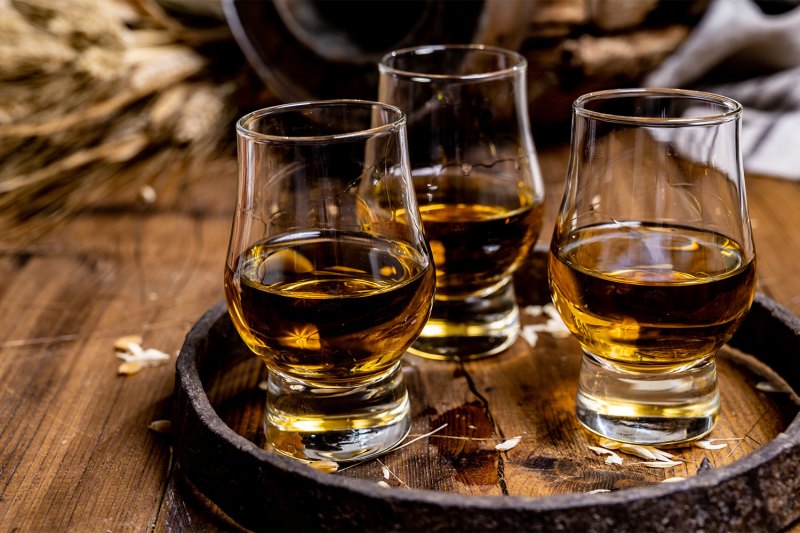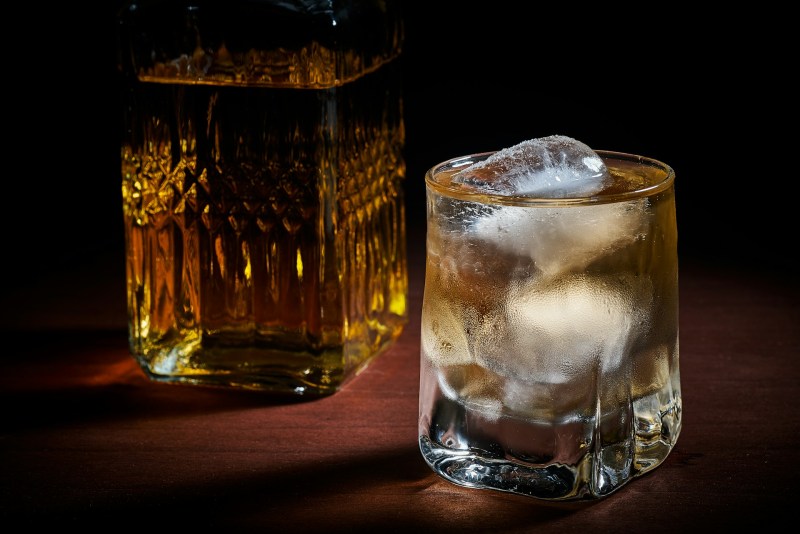
If you’re confusing your whiskey and bourbon, you’re not alone. The drinks industry is full of little nuances, often born of geography and different ingredients and materials available. Just ask the vast categories of sparkling wine (Champagne or Prosecco?), IPA (hazy or West Coast?), and brandy (cognac or Armagnac?). They’re full of sub-categories, stylistic tweaks, and ongoing riffs.
But you should probably know the difference between bourbon and whiskey. Not only is it good knowledge to keep in your back pocket, but it’ll help inform your sipping going forward, offering context for flavor variations and — hopefully — exposing you to new and enjoyable options. Keep reading on to learn more about bourbon vs. whiskey and exactly what is whiskey.
What is whiskey?

Think of whiskey as an umbrella, encompassing a host of different varieties beneath. Like Canadian whisky, Japanese whisky, Scotch, and rye, bourbon is one of those underlying varieties. And it’s arguably the most homegrown version of whiskey for people in the United States, based on the all-American corn crop as its main fermented grain.
For a whiskey to be classified as bourbon, at least 51% of the mash bill must be corn, which tends to produce a sweeter type of whiskey. There are additional requirements for a whiskey to be called bourbon, and one of the biggest requirements involves the wood used for the barrels that bourbon is aged in.
What is bourbon?

Unlike wine and other spirits, bourbon must be aged in a barrel made from a single kind of wood. By law, bourbon must be aged in new oak barrels that have been charred. Charring is what it sounds like and involves taking a flame to the inner walls of the barrel. The heat produces compounds in the wood that rub off on the whiskey — think vanilla, toast, and baking spices. Bourbon also requires new barrels, unlike other spirits, which are allowed to age in previously used barrels that once held things like wine or sherry. That means there’s a certain purity to bourbon as it isn’t leeching any additional notes from something that previously occupied the barrel as it ages.
The wood used for bourbon barrels tends to be American white oak. Bourbon makers like this grain because it enhances the bourbon’s taste, and in the case of American vs. French oak, the former tends to stand up to higher alcohol content better. With its one-two punch of domestic grain and often domestic wood for aging, bourbon offers a certain level of American terroir. In that sense, think of it like this: Bourbon is to whiskey as Burgundy is to Pinot Noir.
While bourbon does not have to come from Kentucky, the vast majority does (to the tune of almost 95%). It’s a roughly $9 billion industry in the Bluegrass state, with bourbon trails not unlike the wine trails associated with Napa or the Willamette Valley. Kentucky is where bourbon was born and remains its stronghold, offering plenty of local corn and other grains and a climate favorable for aging.
Look for that percentage to continue to change as more producers pop up elsewhere. Great options are coming out of places like Washington (Dry Fly) and Texas (Balcones). Kentucky has the heritage, but more and more folks are experimenting with various mash bills (still corn-dominated) that reflect different parts of the country.
One more thing to know about bourbon is the amount of alcohol allowed throughout the process, something that changes a bit from spirit to spirit, even whiskey to whiskey. They can only be distilled at a maximum of 160 proof and barrel-aged to a maximum of 125 proof. The finished product must clock in at a minimum of 80 proof (40% alcohol).
Of the many whiskeys out there, bourbon is a bit sweeter, generally quite smooth, and a great example of a real, American-made spirit. Enjoy a pour on its own or see how it fares in your favorite classic whiskey cocktails.
Whiskey vs. whisky: Yes, spelling does count

If you were paying close attention to the beginning of this article, you may have noticed that we used “whisky” and “whiskey” interchangeably. No, we didn’t forget how to spell, the name of the spirit is spelled differently depending on where it was made.
Whisky is the spelling for Scotch whisky, and the spelling is not just a tradition, it is part of Scottish law. Whiskies distilled in Canada, Japan, England, and Australia are also spelled without the “e,” though that’s by tradition, not by law. Whiskeys from the U.S. and Ireland generally spell whiskey with the “e,” although there are some exceptions, most notably, Makers Mark bourbon uses the spelling whisky as a tribute to the founding family’s Scottish-Irish roots.


